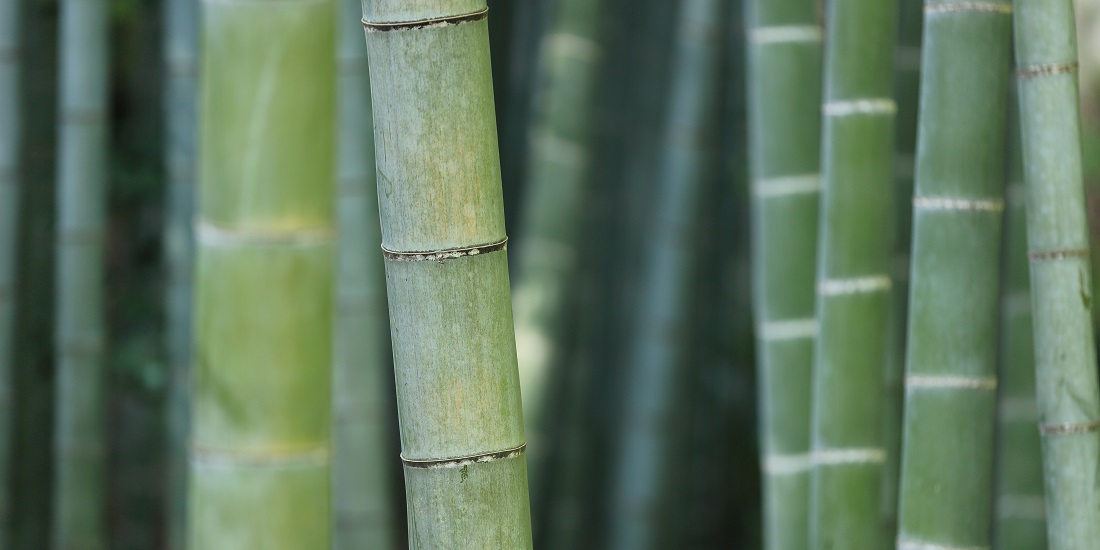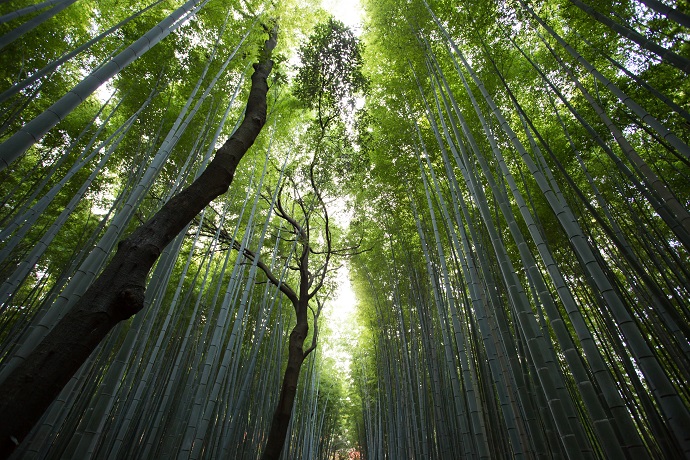Manage your (small) Spaces with Bamboo

Not everyone has a huge garden to work with, and that is just fine. There is no need to give up on having a fascinating natural space to admire just because your space is limited. With a spot of creativity, a gem can form beneath your hands, with a little help from a fantastic plant or two.
Bamboo is here for you, and in abundance. With over 100 varieties of bamboo, there is the perfect partnership waiting for you. Depending on your space and ambitions, a carefully chosen bamboo plant can provide the privacy, indoor ambience or outdoor living space that you desire.
Full sun
Phyllostachys, which is a wonderfully cold-hardy plant suited to zones 5 through 10 and enjoys about 6 hours of direct sunlight. This particular bamboo is the most easily recognizable, and if strategically planted, and controlled, it can provide the illusion of a wonderful bamboo forest that can shape a garden to create intimate spaces, or provide a screen for privacy from passersby that can also function as a stunning entry. If you want the classic green bamboo, Phyllostachys bamboo provides that easily in a range of greens. If you want a bit more variety, you can choose between yellows, reds and black – black bamboo being a fashionable favorite for many.
This particular kind of bamboo is a running bamboo, as opposed to the other main variety – clumping bamboo. Running bamboos grow rapidly and will need a vigilant eye to ensure that their zealous rhizomes don’t start to take over the rest of your yard. Barriers are a great way of ensuring that your bamboo forest or screen stays where you need it to, with regular removal of any escaping runners. Bamboo is a member of the grass family and running bamboo in particular is very good at spreading.
Another huge advantage of using bamboo as a screen instead of trees is that bamboo can be topped with no harm done, if cut just above a node, so no neighbor need ever complain of an obstruction to their view. The removed bamboo can then be reused in the garden immediately or left to dry on a flat surface for later use in a project such as a bamboo bed border.
Shaping an intimate nook in one’s garden is also possible with well placed barriers and shaping, then all that is needed is some garden furniture to match your chosen aesthetic within the bamboo forest walls.
Partial sun – Shaded areas
If you want bamboo for a corner or center bed that is partially or fully shaded, clumping bamboo is the best bet, especially the dwarf varieties as these can be pruned or trimmed to ground level in spring for even thicker regrowth later. For hot, southern climates Bambusa is great, for cool, mild climates there is Chusquea, Borinda, and Himalayacalamus. For cold climates Fargesia bamboo can deal with zone 5 climates, but that is about as cold-hardy as clumping bamboo comes. Clumping bamboo can be pruned and shaped to your heart’s desire with no harm to the plant and the outer canes can be removed to ensure it doesn’t spread too wide.

In addition, a plant that typically works well with the aesthetic created by bamboo, and that provides a stunning flash of color is the dwarf Japanese maple. Japanese maples are not fast growing and so are often kept as bonsais, but make for excellent shrubs reaching an average of 6-8 feet. Japanese maples can create a stunning centerpiece or focal point in a yard where space is limited. With a range of greens and reds to choose from, any color palette can be complemented or contrasted against by these beautiful shrubs.
Indoors
Believe it or not, indoor bamboo is quite often not actually real bamboo. No harm is done by this as the same aesthetic is achieved, but the truth is that Lucky bamboo is actually a member of the lily family – Dracaena sanderiana. The bamboo typically known as heavenly or sacred bamboo is called Nandina and is actually a member of the barberry family. This one in particular can be invasive, so be careful when purchasing and planting this variety.
These two may have become so popular and widely marketed as bamboo because bamboo is not an easy plant to grow indoors. While the different varieties can thrive in different indoor light levels, it can still be tricky to care for them correctly indoors. The balance of humidity and effective watering can be tricky to attain, as root rot is a killer. Keeping an indoor bamboo a little dry (note, not completely dried out) can allow for it to maintain a healthy growth level, especially if cared for with a fertilizer that contains trace minerals. A pebble bed that contains water underneath the pot of the bamboo is a good option for maintaining a good level of humidity, especially in the warmer, highly productive season, and avoiding root rot in the cooler, resting seasons.
If all this sounds daunting, and you were hoping to find a hardy indoor plant that will do better with neglect than doting attention to detail and changes in humidity levels, then say hooray for Dracaena.
While the cuttings take root in water, after a fair amount of leaves have been grown, Dracaena needs to be potted and then pretty much left be. Dracaena adjusts to the lighting level it gets, doesn’t need to be fertilized too regularly – every 3 to 6 months should do just fine, and only requires watering once the soil dries to a depth of about 2 inches. This is a great partnership for those who love indoor plants but just don’t have the time to devote to ones that are a little needy.
Whatever your needs may be, bamboo probably has an answer for you too, so take a look at what you need and choose a bamboo.